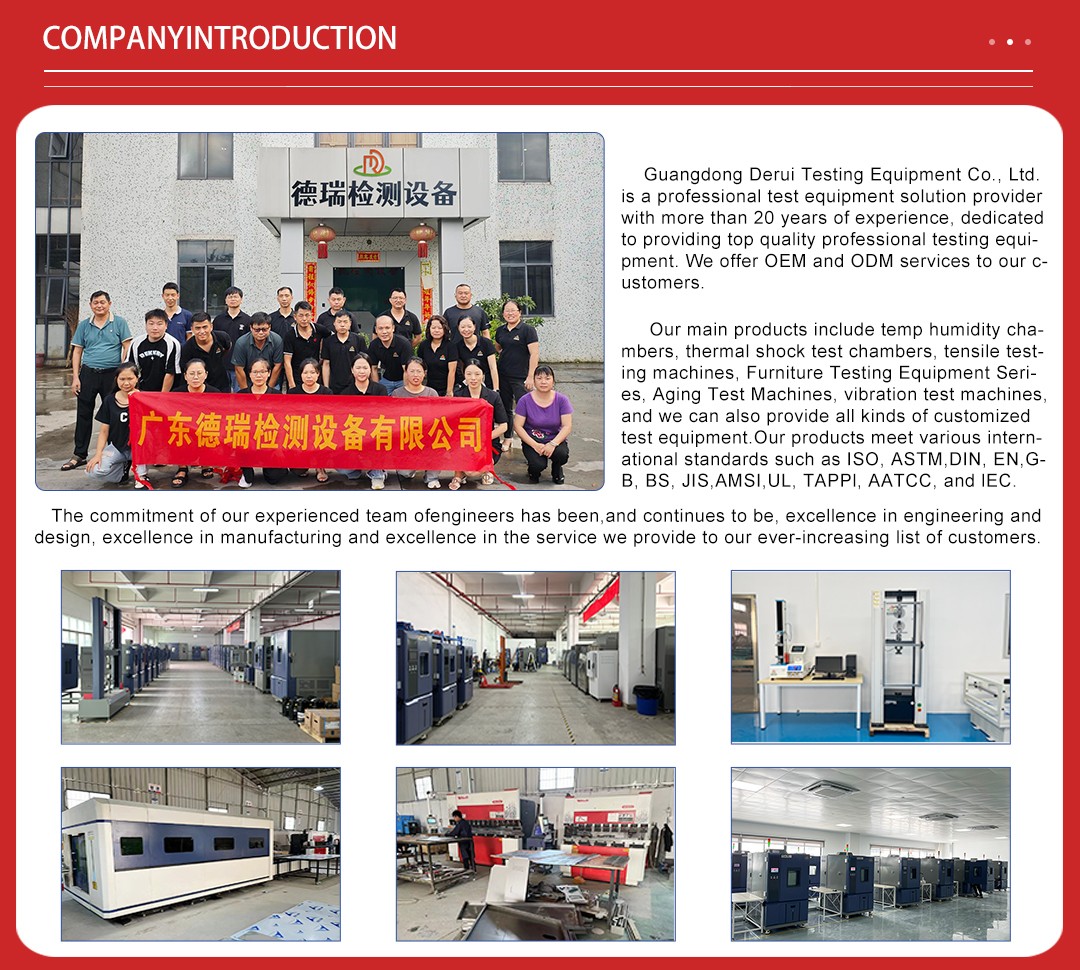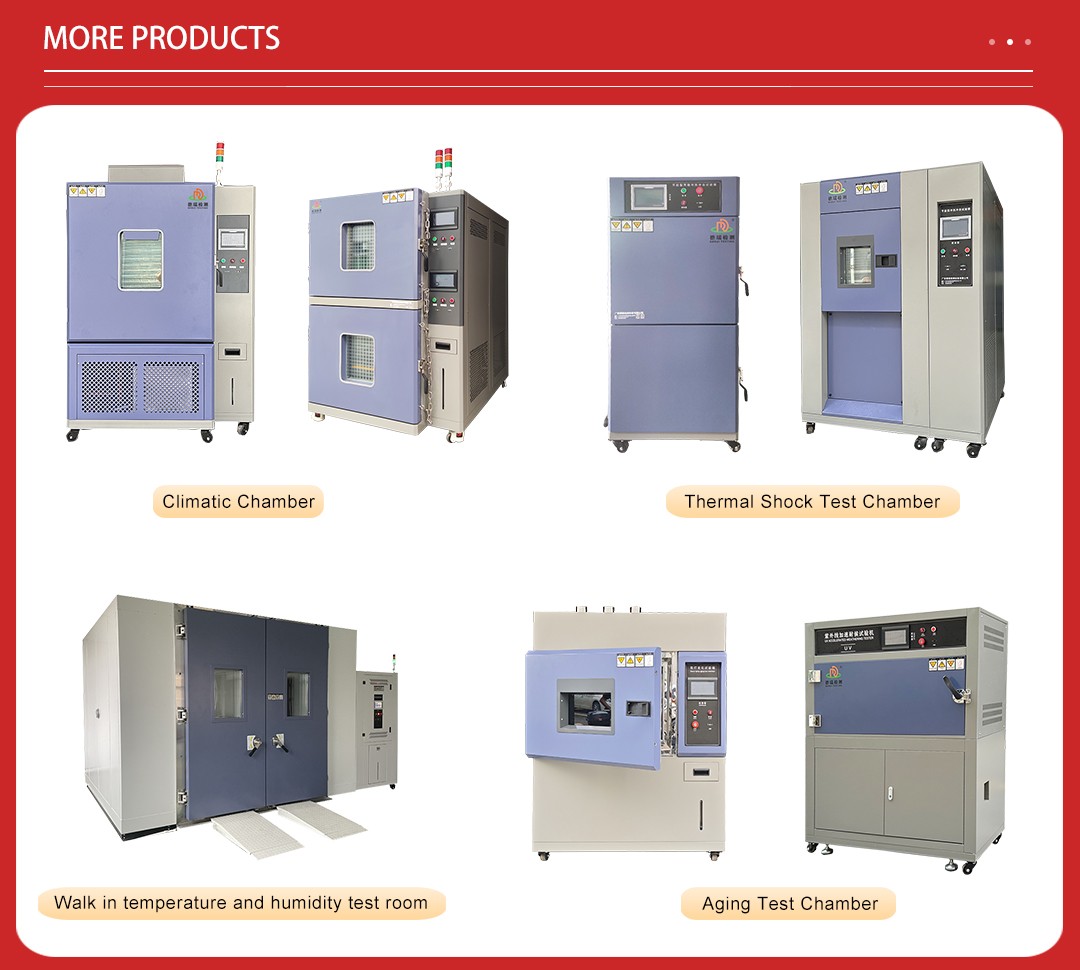
A flexible, programmable temperature and humidity chamber designed for electronic products is an advanced testing device that simulates various environmental conditions to evaluate the performance, re ...

A flexible, programmable temperature and humidity chamber designed for electronic products is an advanced testing device that simulates various environmental conditions to evaluate the performance, reliability, and durability of electronic components under controlled temperature and humidity variations. These chambers are essential tools for R&D labs, quality control units, and product validation processes in industries such as consumer electronics, automotive, aerospace, and medical devices.

1. Temperature Control
The chamber offers precise temperature control over a wide range, typically from -70°C to +180°C, allowing for both extreme cold and high-temperature testing. The system utilizes advanced heating and cooling mechanisms (such as Peltier coolers or vapor-compression refrigeration systems) to rapidly achieve and maintain the set temperature. This flexibility is critical for simulating real-world operating conditions where electronic devices may encounter high heat loads or extreme cold, potentially affecting their performance or lifespan.
The ability to control humidity levels is equally important for assessing how electronic products will perform under varying moisture conditions. The chamber can regulate humidity levels from 10% RH (Relative Humidity) to 98% RH, ensuring that the device can endure situations ranging from dry environments to highly humid conditions. This helps in detecting potential issues like condensation, corrosion, or short-circuiting that may arise when moisture interacts with electronic components.
Modern temperature and humidity chambers are equipped with programmable controllers that allow users to create dynamic test profiles. These profiles can simulate real-world conditions by varying temperature and humidity over time, mimicking cyclical or constant conditions that products may experience during their lifecycle. For instance, the chamber may programmatically transition from a high-humidity environment to a dry, hot one, or maintain a stable temperature while fluctuating humidity to test moisture-induced damage.
To ensure test accuracy and reproducibility, these chambers often come equipped with sensors to continuously monitor temperature, humidity, and even pressure within the chamber. Real-time data logging, along with connectivity options such as USB, Ethernet, or Wi-Fi, allows researchers and engineers to track test progress and collect data for further analysis. The data can be used to assess performance degradation, predict lifespan, and validate the product’s environmental tolerance.
Effective airflow design is critical in these chambers to ensure uniform temperature and humidity distribution. Many models incorporate forced convection systems, which help maintain consistent conditions throughout the test space. Uniform airflow prevents temperature or humidity gradients, ensuring the reliability and consistency of testing.
Given the potentially hazardous conditions within the chamber (such as extreme temperatures or high humidity), safety features are crucial. These include over-temperature protection, over-current protection, and emergency shutdown systems. Moreover, many chambers are designed to meet international standards such as ISO 9001, IEC 61000, and UL 61010, ensuring that they comply with industry requirements for safety and environmental testing.

One of the primary uses of a flexible temperature and humidity chamber is to simulate environmental stress over extended periods. By subjecting electronics to fluctuating temperatures and humidity, manufacturers can observe how components react under stress, revealing potential points of failure, such as thermal expansion, component degradation, or moisture-related failures.
For products expected to have long lifespans, such as semiconductors, LED systems, and battery-powered devices, accelerated life tests help predict product behavior over time. The chamber can rapidly cycle temperature and humidity to hasten wear and tear, simulating years of use in a condensed timeframe.
Many electronic products need to meet industry-specific environmental standards, such as RoHS (Restriction of Hazardous Substances), IP (Ingress Protection) ratings, or automotive-grade testing. The temperature and humidity chamber provides controlled conditions to ensure compliance with these stringent regulations.
During the design phase, engineers use temperature and humidity chambers to optimize products for environmental durability. Whether it’s testing a new smartphone’s resistance to moisture or a medical device’s ability to operate in extreme temperatures, these chambers help refine product design and ensure its robustness in real-world conditions.
By testing electronic products under extreme conditions, engineers can assess their end-of-life behavior. This is especially important for critical applications like aerospace electronics, where component failure can have catastrophic consequences. Ensuring that devices can continue functioning within specifications for their expected lifespan is key.

Model | DR-H201-100 | DR-H201-150 | DR-H201-225 | DR-H201-408 | DR-H201-1000 | |
Internal Dimension (W*H*D) | 500*500*400mm | 500*500*600mm | 600*750*500mm | 600*850*800mm | 1000*1000*1000mm | |
External Dimension (paint Type) (W*H*D) | 750*1536*1310mm | 750*1636*1410mm | 850*1786*1410mm | 850*1890*1710mm | 1250*2066*1910mm | |
Temperature(℃) | -20/-40/-70 | -20/-40/-70 | -20/-40/-70 | -20/-40/-70 | -20/-40/-70 | |
Total Power(kw) | 4.5/4.5/6.5 | 5/5/6.5 | 9.5/9.5/11.6 | 9.5/9.5/11.6 | 17/17/21.5 | |
Maximum Current(A) | 25/25/32 | 32/32/40 | 25/32/40 | 25/32/40 | 50/50/60 | |
Voltage(A) | Sigle Phase 220V | Sigle Phase 220V | Three Phase 380V | Three Phase 380V | Three Phase 380V | |
Performane | Temp.& Humi. Adjust Way | Balanced temperature and humidity control (BTHC) PID intelligent adjustment | ||||
Temperature range | -20℃,-40℃,-70℃~150℃ | |||||
Temperature accuracy | 0.01℃ | |||||
Temperature tolerance | ≤±1.0℃ or ±2.0℃ | |||||
Temperature fluctuations | ≤±0.5℃ (without load and temperature stable) | |||||
Temperature uniformity | ≤1.5℃ (without loading), 50mm≤SENSOR | |||||
Humidity range | 20%-98%RH | |||||
Humidity accuracy | 0.1%RH | |||||
Humidity tolerance | 1 、≥75%RH:≤±3%RH ;2 、≤75%RH :≤±6%RH | |||||
Humidity fluctuations | ≤±2.5%RH | |||||
Heating rate | 3℃/min in average | |||||
Cooling rate | 1℃/min in average | |||||
Internal Chamber Material | Stainless Steel 304 | |||||
External Chamber Material | Stainless Steel steel of paint spray | |||||
| Cooling Method | Single stage compression, two stage compression | ||||
Refrigerator | Hermertically Sealed France Tecumseh Compressor or Semi-hermetic BOCK Compressor | |||||
Cooling Method | Air-cooled | |||||
| Operation Panel | Programmable LCD Touch Screen | ||||
Running Mode | Fix Running, Pattern Running | |||||
Program Memory Capacity | 120 Group Programmable, Max 100 Section Each | |||||
Output | Rs-232 (USB,Optional) | |||||
| Water Supply | Circulating Water | ||||
Water Tank Capacity | Chamber Internal Capacity < 800L: 25L X 1pc | |||||


Not search wanted products